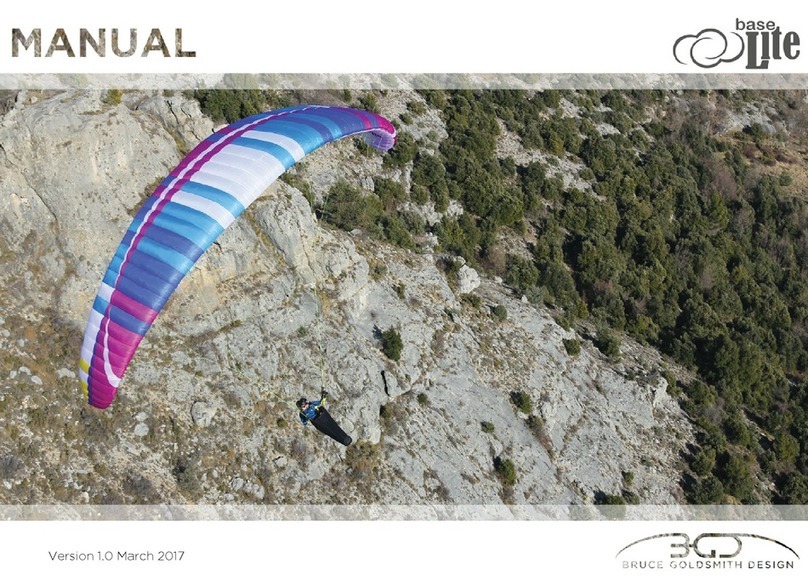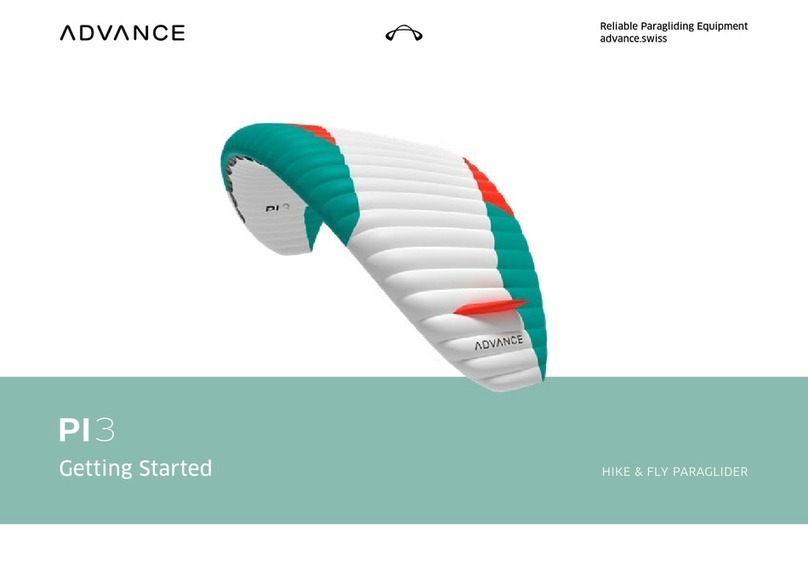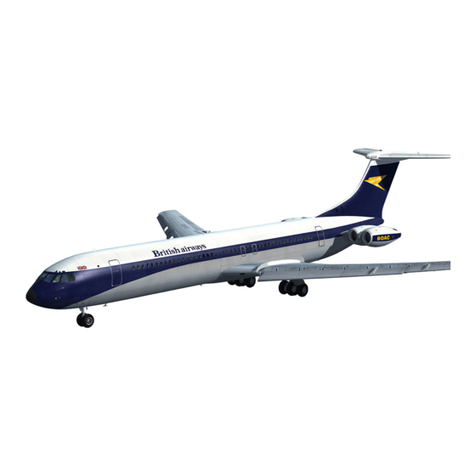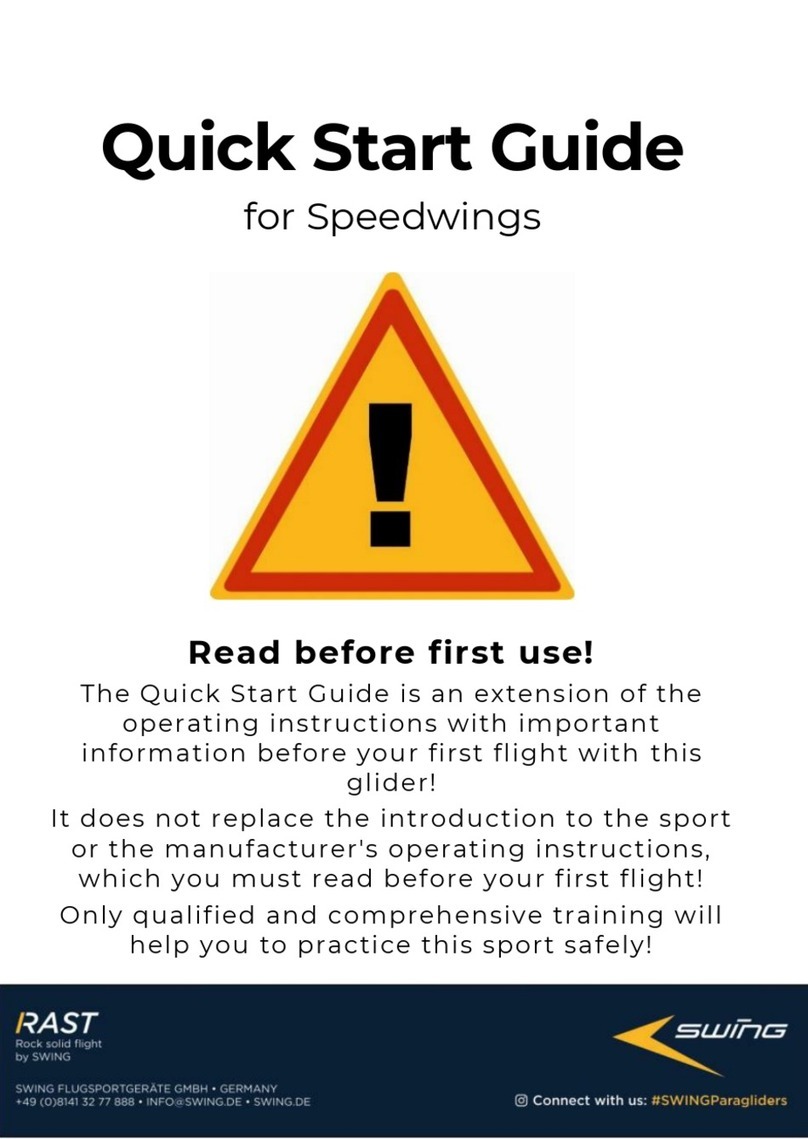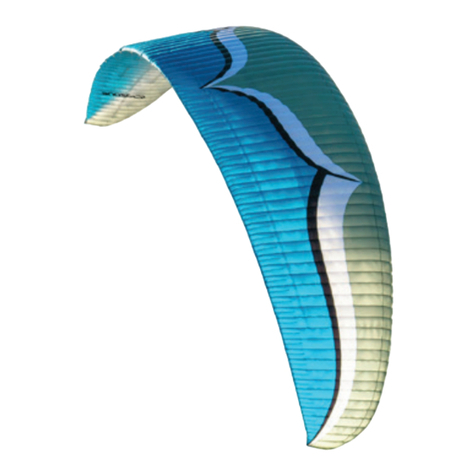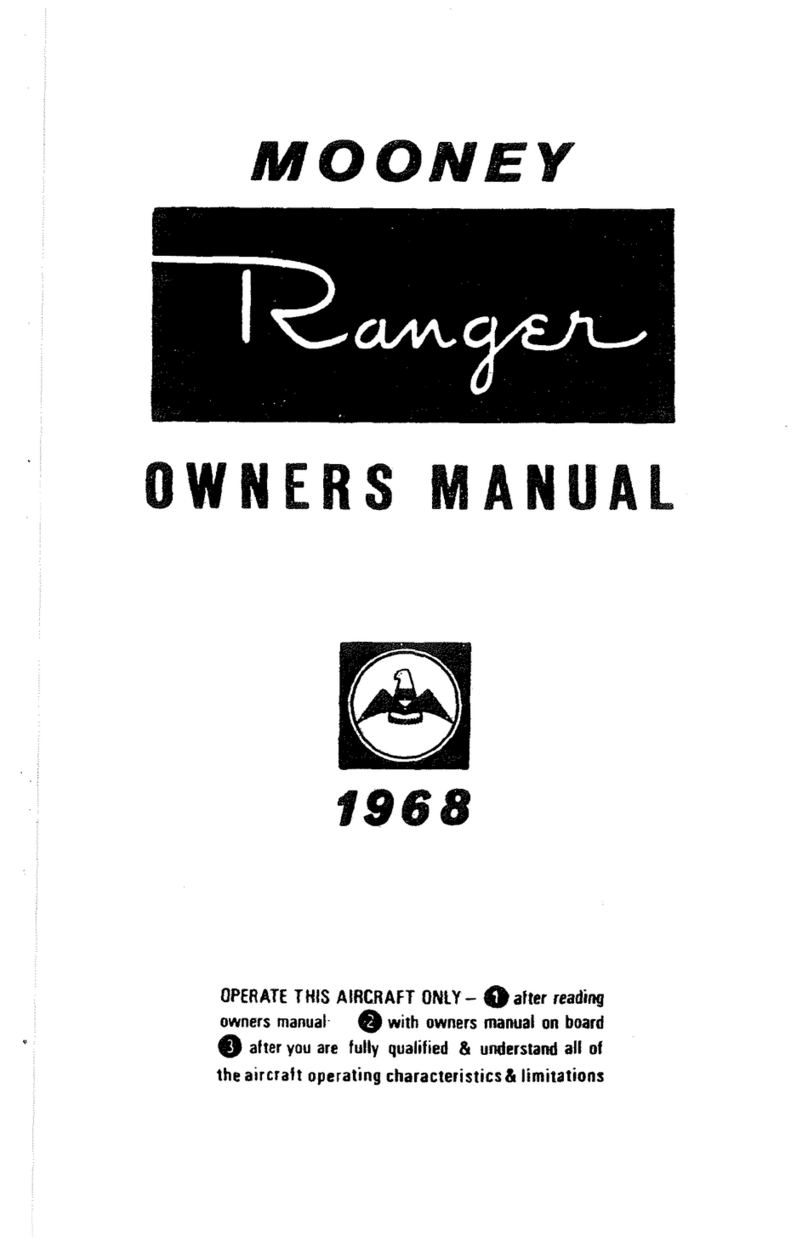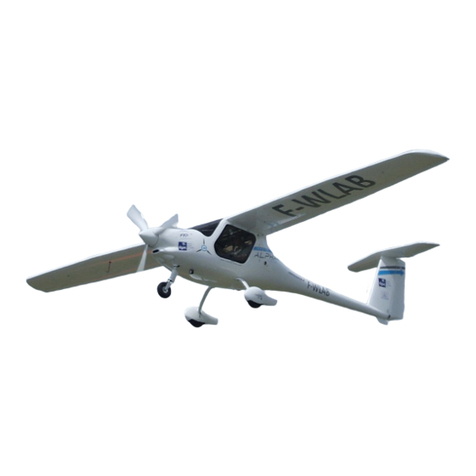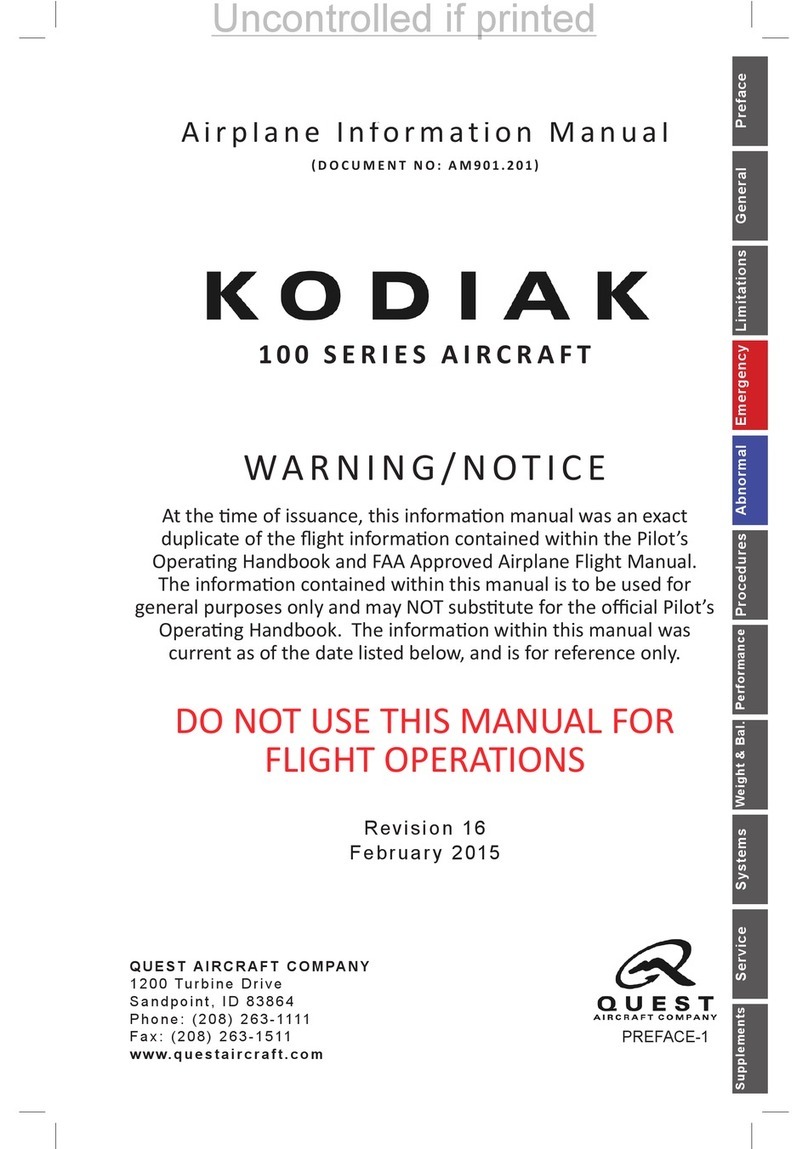Skycraft Scout User manual


SKYCRAFT "SCOUT" AIRCRAFT - EX-GRATE ASSEMBL
y
INSTRUCTIONS
Remove
fabrics and wi.ngspars From cr-ate, Carefully
remove
the fuselage
and its sub-'~ssembties, which are connected by the control cables.
/
DO NOT REMOVE NUTS, BOLTS, WASHERS, ETC. From ANY com-
ponent unti.t you are ready for the assembly of that particular art. DO NOT
REMOVE the terylene lanyards From the rudder control cab es.
With the fuselage upright and the cyl inder head resting on btock, erect the
king post at "A" (Fig.
1).
Refer to Fig. 2. Assemble the orward top éables
as shown at "B". Push down on the fuselage, as indicat d, and assemble
the aft top cable, as shown at "B".
For ease of assembly,
tt
i
s recommended triat the fard end of the
fuselage be suspended about four feet
above
floor l eyby mean
or-a
r-ope,
Assemble the vertical A-frame truss (ref. Fig. ,. n~uding ~e landing
wheels springs and the forward °brace cables, a sh , and attach to the
fuselage at
"c"
(Fig.
1).
CI'
Raise the vertical column and fus)kage a "0". Make sure
that the control cables are not twisted arou the colum •
Enter- the forward end of the tor-que tube . to ~ spigo bearing and attach
the horizontal struts to the axle beam at
I~
~d "~", engaging the .footrest by
means of the same bolts, Refer to ass mb detait ig. 4•
...
Remove
the nyloc nut and washer at
1
F" on Fig. and assemble the rear
end of the horizontal strut, as show. • DO NOT VERTIGHTEN the nyloc
nut.
Dismantle the turnbuckle on the
~Q
aft c le and assemble the eyebolt
and turnbuckle half at "G" (Fig
1)
heck 5 rward cables and top and
bottom aft cables to ensure th t tare t twisted, as shown in Fig.
5.
Re-engage the turnbuckle ev nl;(~nd sc w to tighten until both top and
bottom cables register ten on~pply t ree or four more turns to the turn-
buckle, DO NOT OVERT ~N. Se ure the turnbuckle lock n..Jtsand
lead up the safety wire,
0
to eng ge both fork ends and the centre secti.on,
as shown. .
Assemble the inciden e ba'-7at "H', Fig. 1.
The steel shackle- a~ shoul be fitted on top of the fuselage with the hole
towards the rear.
0
give
cle ance for fixlng the elevator drag wire
shackle, twist th steel shac e-bracket by about
45
degrees.
Assemble the t rottle cont I with lever upwards.
Connect the p sh-on ter nals to the ignition switch.
Apply grease to the exh ust atub , Push flexible pipe onto stub. Assemble
the extension pipe to tHe fuselage, as shown at
J .
Rotate pipe, so that
discharge holes are n top. Tighten clamp band on exhaust atub,
Ratse rear of fusel ge, so that the airframe rests on axle and propeller
shaft Assemble lot seat to four holding lugs on the horizontal struts.
Clean and oil la ing wheels' axles and i\.Sselë"Abl.elanding wheels •.Spread
lower ends of split pins against outside retaining washers.
RUbDER: Refer to Fig. 6. Insert the spar stub
(1)
into the bottom spar and
secure with self-tapping screw
(2).
Pull the fabric back along the spar
tub, so that the holes
t
n the fabric and the spar are lined up, Enter the
s rews
(3)
and tighten. Secure the lower rib batten with threàd provided.

Contd ••••••••••• ••
2
REFER NON TO THE ATTACHED RIGGING INSTRUCTIONS FOR TAIL
PLANE.
Rig the Rudder. Rig the Elevators. NOTE: When rigging the ELEVATORS,
hold the extension of the left hand tr-atling spar against your left knee -
reach over and pull the right hand spar towards you; enter the pin into the
spar end. Push the Elevators DOWN. (Damage to the drive tubes could
occur, if the Elevators are permitted to adopt the "up" position before the
bottom cables are shackled to the skeg).
CAUTION: Refer again to Fig. 5. Have your assistant operate both Elevators
and Rudder, while you carefully trace the travel of all control cables over
their directing pullay wheels.
CHECK all control fittings, shackle pins, cotter pins, split pins, etc.
Dismantle Elevators and Rudder.
IMPORTANT: CHECK every attach point on the airframe and engine
mountings for general sea.Jrity. CHECK everyattach point on wing spars
for general security. Then HAVE A COMPETENT PERSON RE-CHECK
the enti re ai rc raft •
BE CAREFUL not to crush tubular components by overtightening nyloc nuts.
Use a goOOscrewdriver to check shackle screws on the wi.ng spars. AL WAYS
use a small adjustable spanner to tighten spade-end shackle pins, as used on
tail plane rigging and Flying wires. (FINGER TIGHT IS NOT GOOD
ENOUGH). --
With spark plug removed, fill fuel tank with recommended fuel mixture.
Remove hexagon bar-r-etnut and gasket at base of carburettor. Turn on fuel
and allow to Flow through carburettor. Replace bar-r-et nut and gasket.
Stand behind the propeller on the right hand side of the atr-cr-af't, Rotate the
propeller by pulling down smartly with the right hand, (This is the
recommended engine starting procedure. Never stand tn front of the propeller
to start the engine). As the cylinder may lack adequate lubr-tcatton, rotate
the propeller several times, so as to induce oil mixture into the
cyl
tnder-,
Turn off fuel.
SKYCRAFT "SCOUT" - DRIVE SYSTEM - FITTING
&
ADJUSTMENT
Fiti ing of propeller and Pl Yflex 'V' belts
1. Check the distance between the shaft centres - this should be 7 3/8 (appr-ox
s)
If incorrect see belt adjustment procedure.
2. Secure the nylon pr-op pulley to prop boss with the set-screws provided
- (nuts towards the front).
3. Push the propeller on to the prop shaft - the spacer washers should be
left on the shaft before pushing the pr-op home. Tighten the prop nut
(açatn leaving the washers in position on the front bearing) until the prop
is fully home. With a straight edge held against the engine pulley, check
the alignment of the pulleys. If not aligned, adjust by moving one of the
outer spacer-washers from back to front of the prop boss or vice versa.
Ensure that the two washers next to the bearing in the prop boss on both
sides are arranged so that the smaller washer is innermost followed by
the larger one.
N. B. - Before fitting the belts ensure that your hands and the belts, pulleys
etc. are free from otl or grease - any ott on these belts will cause .slippaqe,
4. Remove prop and slip the two belts over the nylon pulley. Re-fit pr-op,
Tighten the nut to push pr-op home then back off nut half a turn and fit
slip pin. The bearings should turn freely without any excess free play.
5. To fit the belts arrange one to hang either side of top pulley. Fit onto
bottom pulley and holding belt on the top pulley with fingers, turn pr-op

contd •••••••••
3
untit belt snaps on. Repeat with the other belt.
6. These belts should be tight. By parting the belts against each other In
their running plane using forefingers and thumbs, the gap between the
two should not exceed
7.( .
If tension is incorrect remove the two lock-
bolts on front engine mounting forks. (Two top ones). Back off the front
nut on top crankcase bolts sufficient to allow tnner- nut to be slackened.
Adjust belt tension by moving the engine up or down as r-equtr-ed, When
tension
t
s correct, check alignment of pulleys with straight edge, and
adjust by moving the front of engine upwards or the rear down as
r-equtr-ed, Re-tighten nuts and fit top lock-bolts.
N.B. - The crankshaft pulley has already been tightened, should you ever
need to remove either the crankshaft pulley or the flywheel mag. you will
require special tools to hold the part being removed. NEVER tighten or
slacken by holding one against the other - this will distort the crankshaft.
The engine is now ready for the running-in procedure.
SKYCRAFT "SCOlfT" AIRCRAFT
"PIXIE" 173c.c. ENGINE
FUEL MIX
Do NOT use ready mixed blends of two-stroke fuel. ADD ONE THIRD PINT
of CASTROL SUPER. TWo-STROKE OIL to ONE GALLON of SUPER.
GRADE PETROL (40ml. :litre).
RUNNING-IN PER.
100:
It is advisable to run the engine for about half an
hour at quarter throttle before using the aircraft in fl ight.
Procedure:
1. Fasten the aft end of the fuselage securely with a stout r-ope,
2. Start the engine and run at a fast idle for three ten minute periods,
allowing the engine to cool completely between each running per-iod,
3. With the engine qutte oold , tighten the four nuts at thebase of the
cylinder. (Spanner size - 7/16" A. F .).
4. Check the four cylinder head bolts for tightness.
5. Drain carburettor, inspect main jet and c1ean, if necessary~ Tighten
all screws and fuel li.ne connections.
Çheck all nuts, bolts, screws, split-pins, etc.
Spark Plug: Bosch No. W. 145-T 1• Gap: 0.020".
General: Drain fuel tank frequently, particularly
i
n cold weather.
COMPlfTERISED IGNITION SYSTEM
Your "SCOlfT" Aircraft
t
s fitted with the Computerised Ignition System~
which e1i.minates points and condenser. The system requires NO
adjustment whatsoever. The intensity of the spark may be checked by
rotating the propeller briskly (spark plug removed) and, at the same time,
holding the H.T. lead about 1/8" from any earth point on the aircraft
fuselage.
WARNING~ Do NOT use a coit tester -
tt
witl destroy the system, and,
A flywheel spanner, which engages the squar-ed lugs on the
back of the flywheel MUST BE used when removing or

contd •••• ••••
4
replacing the flywheel retaining nut.
BE SURE TO: Lubricate the LANDING WHEELS, by squtr-ttnç ott
directly tnto the axle tubes, and the TAIL WHEEL,
frequently. All moving parts of the control system should
be kept clean and lightly otted ,
ADJUSTMENTS FOR DIAPHRAGM CARBURETTOR
The following procedure must be adopted with a new atr-cr-art,
Fi 11fuel tank with prescribed mix.
Be sure that the ignition cut-out switch
t
s tn the OFF position (DOWN).
Loosen the screw retaining the plastic filler bowl on the underside of
the car-buretto r •
Turn on the fuel tap to allow the fuel to run down the fuel line and
drain from the base of the car-bur-ettor-,
When air bubbles in the fuel line have been eradicated , ttghten up the
fuel bowl screw.
Remove spark plug from engine.
Open the throttle full; spin the propeller with the palm of one hand
over- the inlet of the carburettor untH the carburettor floods. This
will ensure that the carburettor
t
s pr-trned,
Spin the propeller over several times with the inlet open to
discharge excess fuel From the engine.
Replace the spark plug and start the engine, as per the Instructions.
WHEN VOU RECEIVE YOUR AIRCRAFT, THE ENGINE HAS BEEN RUN
UP AND THE CARBURETTOR ADJUSTED.
However, there are three adjustments on the carburettor with which the
Owner should be Familiar:-
1• The idle speed regulating screw.
2. The idle adjustment screw, marked "L".
3. The main adjustment screw, marked "H".
The idle speed regulattng screw should be screwed inwards to increase the
engine revolutions at idle.
The idle adjustment screw should be set at turns anU-clockwise.
The main adjustment screw should be set at not less than 1-1/4 turns
anti-clockwise.
WHEN MAKING SUBSEQUENT ADJUSTMENTS, IF NECESSARY, DO
NOT FORCE THE ADJUSTMENT SCREWS "L" AND "H" INTO THEIR
SEATS.
EXAMPLE: To adjust main adjustment screw "H", turn the screw
clockwise unttl
tt
bears on
it
s seat; then turn the screw 1-1/2 turns
anti-clockwise.
Repeated UNNECESSARY ac.ju.strner-t.sto the Carburettor COULD RESUL T
lN DAMA GE to the NEEDLE ADJUSTMENT SEATS.









Popular Aircraft manuals by other brands

S.E.A. Paragliders
S.E.A. Paragliders FireStarter Pilot's manual

Tecnam
Tecnam P92 Echo Classic Jabiru Maintenance manual
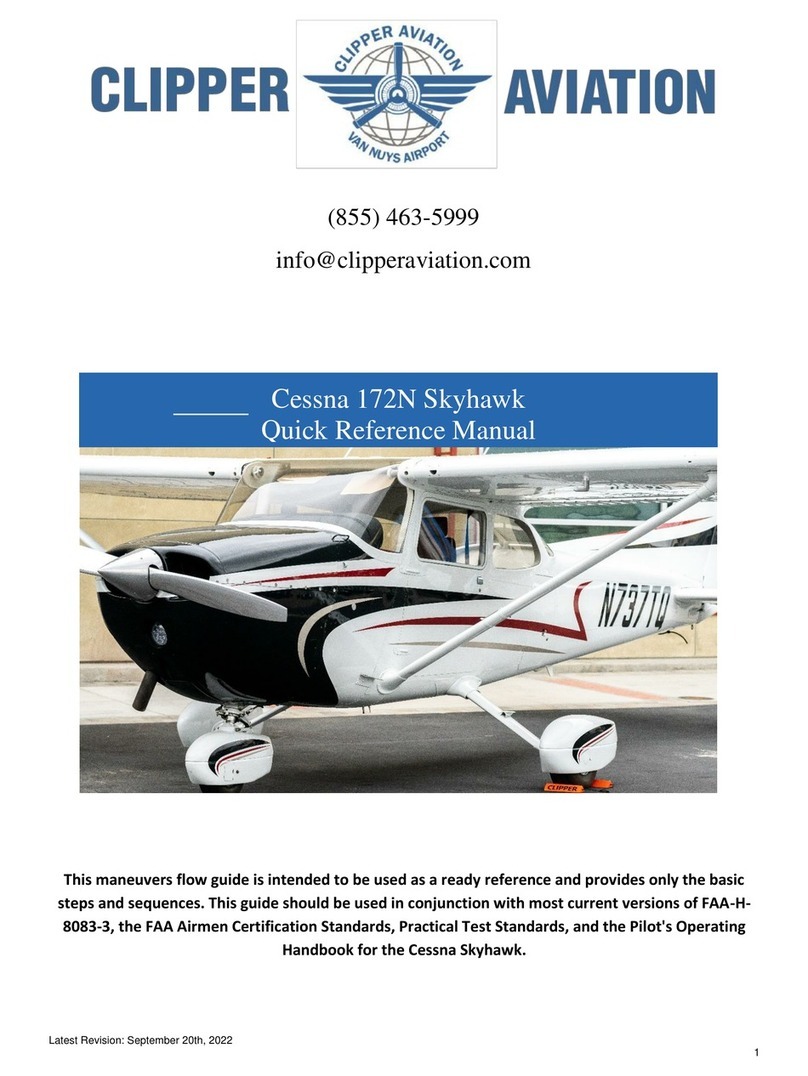
Cessna
Cessna Skyhawk 172N Quick reference manual

X-dream Fly
X-dream Fly X-ONE 90 Operation manuals
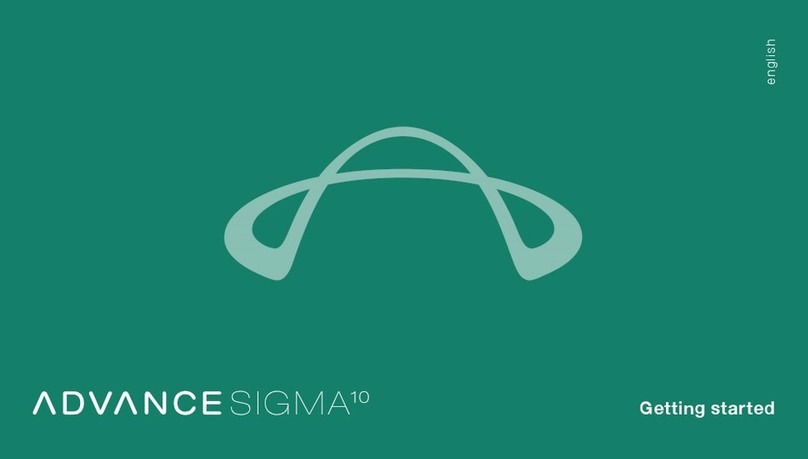
Advance acoustic
Advance acoustic SIGMA 10 Getting started
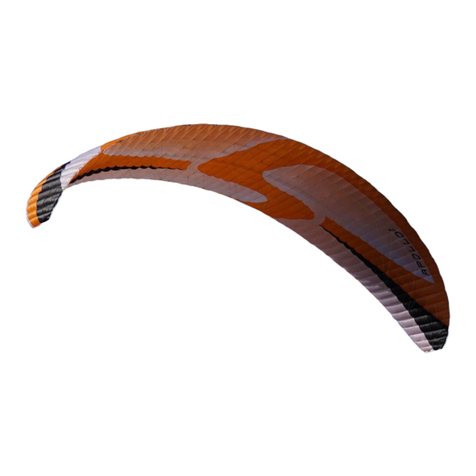
SKY PARAGLIDERS
SKY PARAGLIDERS APOLLO 2 Series user manual

